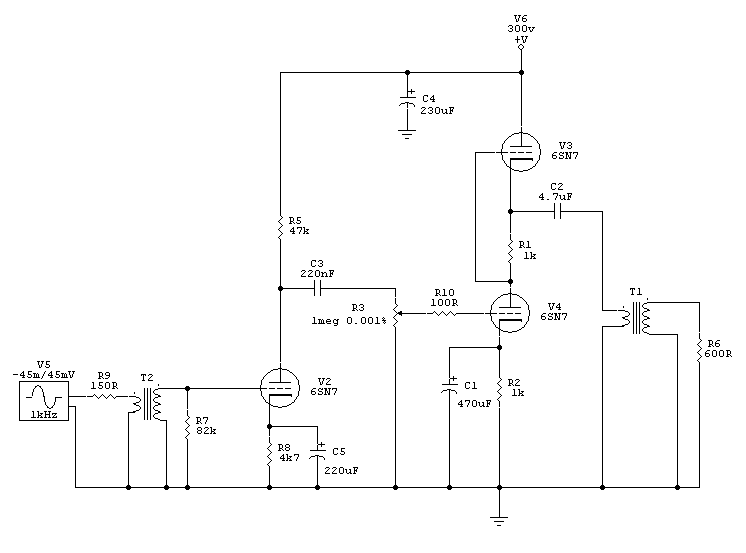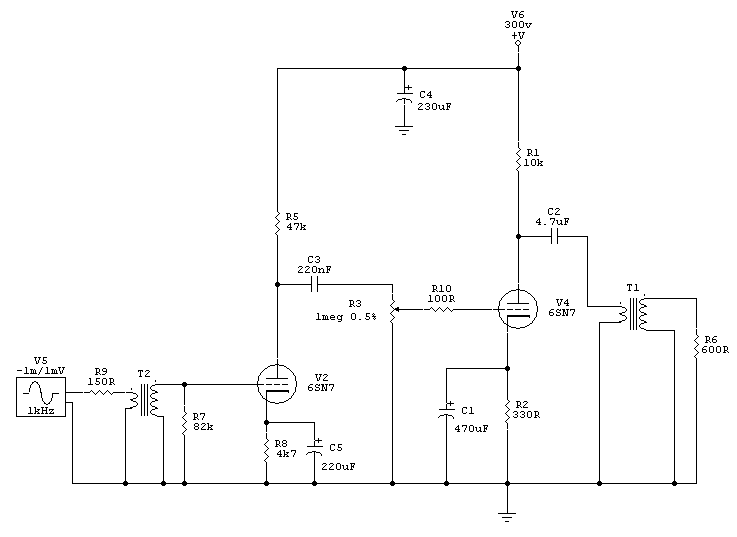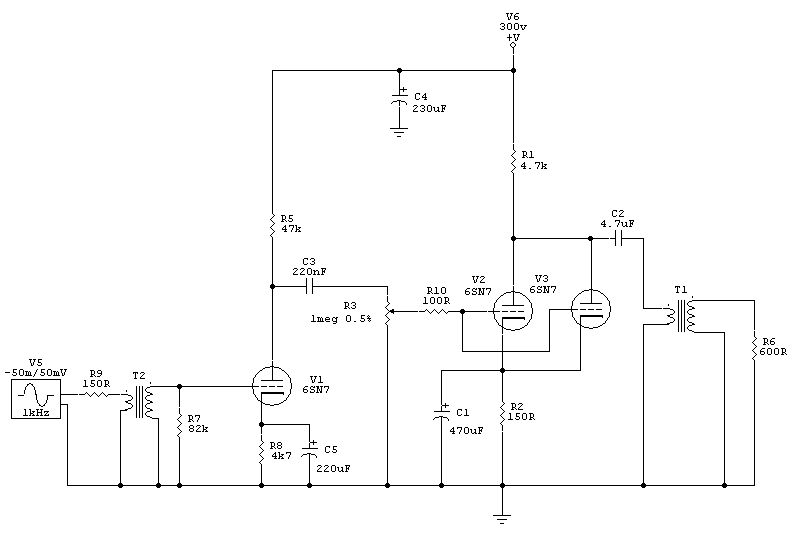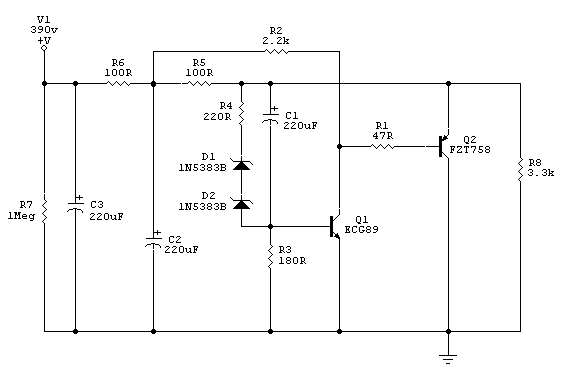rafafredd
Well-known member
Here is another one of my new drawings. After some years of DIY, I´m starting to draw some tube circuits. as it´s always a pleasure to share, here it is.

The 6SN7 and 6CG7/6FQ7 are cheap tubes and most of you might have many on the bench. I do have many. This is a no overall feedback design, that uses just three tubes for a stereo unit. I think this is a clever use of triodes.
A simple 2:1 transformer would make for the output, or you could use no transformer at all, if you don´t need to drive heavy loads. This will give some more gain. So, any 2k4:600Z, 2:1 ratio will do. You can also use the common "line split" 600:600+600 types, wired as 2:1 ratio, inverted, primary in series.
For the inputs, I recomend 1:5 to 1:15, depending on how much gain you need. 1:7 to 1:10 are probably the best alternatives.
As you see, this is a very simple desing, but criticism from the masters, and also from newbies, by the way, is most welcome.

The 6SN7 and 6CG7/6FQ7 are cheap tubes and most of you might have many on the bench. I do have many. This is a no overall feedback design, that uses just three tubes for a stereo unit. I think this is a clever use of triodes.
A simple 2:1 transformer would make for the output, or you could use no transformer at all, if you don´t need to drive heavy loads. This will give some more gain. So, any 2k4:600Z, 2:1 ratio will do. You can also use the common "line split" 600:600+600 types, wired as 2:1 ratio, inverted, primary in series.
For the inputs, I recomend 1:5 to 1:15, depending on how much gain you need. 1:7 to 1:10 are probably the best alternatives.
As you see, this is a very simple desing, but criticism from the masters, and also from newbies, by the way, is most welcome.




































